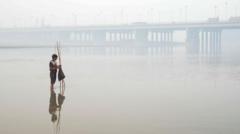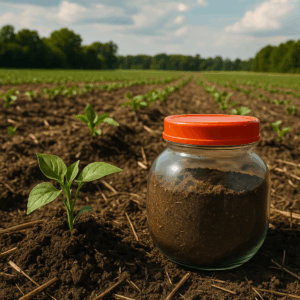As Lahore continues to suffer from hazardous smog conditions, residents are increasingly faced with severe health risks, prompting authorities to implement emergency measures while debates over the pollution's origins unfold.
Lahore Faces Unprecedented Smog Crisis Amid Toxic Air Quality

Lahore Faces Unprecedented Smog Crisis Amid Toxic Air Quality
Severe air pollution affects millions in Lahore as officials struggle to address the alarming health risks caused by massive smog.
A dense layer of smog has engulfed Lahore, disrupting the lives of its 13 million residents and overwhelming healthcare facilities amidst rising pollution levels. The air quality index has crashed into dangerously high figures, creating an urgent crisis that has persisted for over a week. Community members have reported alarming symptoms such as itchy throats, coughing, and severe respiratory issues, particularly among vulnerable groups like children and the elderly.
Pakistani officials are responding by closing schools and issuing “green lockdown” measures that restrict vehicle movement, especially in high-risk areas. Recent rulings by the Lahore High Court mandated that markets close early, alongside the suspension of outdoor activities across parks and zoos until mid-November. While these immediate actions aim to minimize exposure, experts caution that the most devastating air quality days may still be on the horizon. NASA scientist Pawan Gupta notes that pollution traditionally peaks in late November and December, indicating the crisis is still unfolding.
Disturbing satellite images reveal the extent of the smog from space, linking it to rampant agricultural burning practices around Punjab and neighboring India as farmers clear crop residues. Although Pakistan cites Indian farmers' practices as a contributor to nearly 30% of Lahore’s smog, domestic pollutants also play a significant role. The region's notorious traffic congestion and industrial emissions compound the issue, as air quality metrics exceed safe tolerances, registering levels unimaginable elsewhere.
Health experts have begun sounding alarms, with hospitals overwhelmed by patients suffering from respiratory ailments. Dr. Irfan Malik, a pulmonologist in Lahore, highlighted a surge in asthma cases and concerns for an impending cold wave that could further exacerbate health problems. With pollution levels exceeding 1,000 on the AQI scale, residents express their frustration over government responses, questioning the legitimacy of temporary shut-downs rather than comprehensive solutions.
Advocates like Abid Omar, founder of the Pakistan Air Quality Initiative, stress the need for persistent and long-term strategies to combat air pollution, emphasizing that this ongoing issue requires cooperation from both India and Pakistan. Punjab Chief Minister Maryam Nawaz has taken steps towards initiating dialogue on “climate diplomacy” with Indian officials in a bid to find mutually beneficial solutions. Despite these efforts, skepticism remains regarding both governments’ commitment to tackle this persistent problem.
In the meantime, residents like Sadia Kashif continue to face the grim reality of their toxic environment, yearning for clean air for their families. As Lahore grapples with the continuing implications of air pollution, the road ahead appears fraught with challenges, as experts insist that without genuine policy reforms, the prospect of clear skies remains bleak.





















